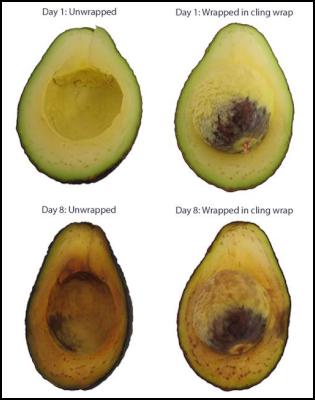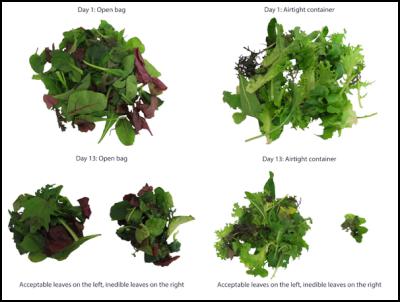Research reveals how to make your vegetables last longer
10 May 2017
NEW UNIVERSITY OF OTAGO RESEARCH REVEALS HOW TO MAKE YOUR VEGETABLES LAST LONGERNew research from the University of Otago has revealed the best home storage methods to lengthen the shelf life of vegetables.
Love Food Hate Waste, the national campaign to help New Zealanders reduce the amount of food they waste, partnered with the University of Otago to test storage practices for many common vegetables found in Kiwis’ refrigerators.
The results, released today, show that simple techniques can lengthen the life of produce and dispels many urban myths around how best to store food.
The research found that the simple act of wrapping a cut avocado in cling wrap and forming a tight seal against the avocado flesh was enough to see it last up to four times longer than an uncovered avocado half.
It also found that brushing the avocado flesh with lemon juice or olive oil, a trick many people swear by, was actually detrimental.
Another key finding was that carrots could last for up to 10 times longer if stored in an airtight container lined with a paper towel compared to being stored loose in the fridge.
With 47,615 tonnes of edible vegetables being thrown away by New Zealand households each year, Love Food Hate Waste hopes this research might encourage people to make a little extra effort when storing their vegetables in order to preserve their quality.
“Many people don’t put a lot of effort into storing their food correctly and with a lot of conflicting information out there, we thought it was time to really put these storage methods to the test,” said Dr Miranda Mirosa from the University of Otago.
“Vegetables make up almost a third of food wasted by New Zealand households, mainly due to their short shelf life. We wanted to find the best ways to make vegetables last for as long as possible so that people would have longer to eat them.
“The key message from the research is that it is better to do something than nothing. Small actions, such as putting your bagged lettuce in an airtight container, can have big impacts in terms of how long the food will last.”
Summary of results
AVOCADO
Whilst technically a fruit, avocados were included in the study due to their popularity and oxidization. 17 different methods for the best storage of cut avocado halves were tested. Methods included brushing the flesh with lemon juice, using an avocado saver, and wrapping the avocado half in cling wrap.
The results revealed that wrapping the avocado in cling wrap and making a tight seal on the surface, with the stone left in, and putting it in the fridge was the most effective way to store a cut avocado. Storing avocado halves in this way could allow them to last for up to four times longer than leaving the avocado half uncovered in the fridge.

BROCCOLI
Seven storage methods were tested for broccoli, including leaving it uncovered, wrapping it in a plastic bag, and wrapping it in cling wrap.
The most successful method of preserving a head of broccoli is to sprinkle it in water (run it under the tap then shake the excess water off), wrap it in paper towels and then store it in the fridge in a ziplock bag. These extra steps will enable the broccoli to stay fresher for up to two and a half times longer than just leaving it in the fridge uncovered.
SALAD GREENS
Seven storage methods were tested to find the best way to keep salad greens fresh. The methods tested included leaving them in the open bag they were purchased in, putting them in a ziplock bag and putting them in an airtight container.
Placing salad greens in an airtight container was the most successful preservation method. This method kept the lettuce leaves fresher for two days longer than just leaving it in the open bag it was purchased in.

CARROTS
Nine methods for storing carrots were tested including storing them loose in the fridge, in a plastic bag, in an airtight container lined with a paper towel, and in an airtight container filled with water.
The best method to store carrots to stop them going limp or black is to put them in an airtight container lined with a paper towel. Storing carrots this way means they can last for up to 10 times longer than if they were unwrapped in the fridge.

CELERY
Six storage methods were trialled for storing celery including storing it in the fridge unwrapped, wrapped in tinfoil, standing in a container with 2-3cm of water, and placing cut celery in an airtight container lined with a paper towel.
The most successful method of maintaining the quality of the whole celery was wrapping the base of the celery in a paper towel and refrigerating it in a ziplock bag.
For cut celery, the best way to store it is in an airtight container lined with a paper towel. Storing celery this way would maintain an acceptable quality for five days longer than if it was left unwrapped in the fridge.
ICEBERG LETTUCE
Six storage methods for preserving iceberg lettuce were tested including unwrapped in the fridge, in a lettuce crisper, wrapped in a paper towel and placed in a ziplock bag, and wrapped in a plastic bag.
Storing iceberg lettuce in a lettuce crisper (an airtight plastic container which has a small tray in the bottom to elevate the lettuce) was one of the best methods to preserve the lettuce. Equally, wrapping the lettuce in a paper towel and then putting it in a ziplock bag achieved a similar result. Both methods could maintain an acceptable quality for up to 4.5 times longer than storing the lettuce unwrapped in the fridge.

PUMPKIN
Six storage methods were trialled for preserving the quality of cut pumpkin. These included wrapping it in cling wrap, wrapping it in a honey wrap (a waxed piece of cloth), and sprinkling it with black pepper. Each method was trialled both with the pumpkin seeds in, and the pumpkin seeds removed.
The most successful method for storing cut pumpkin is wrapping it in cling wrap. Leaving the seeds in or removing them has no impact on how long the pumpkin will last. Wrapping the pumpkin in cling wrap means it could last up to two times longer than leaving it unwrapped in the fridge.
Vegetable storage guide:
Love_Food_Hate_Waste_Vegetables_Storage_Guide.jpg


 Coalition to End Big Dairy: Activists Protest NZ National Dairy Industry Awards Again
Coalition to End Big Dairy: Activists Protest NZ National Dairy Industry Awards Again Infoblox: Dancing With Scammers - The Telegram Tango Investigation
Infoblox: Dancing With Scammers - The Telegram Tango Investigation Consumer NZ: This Mother’s Day, Give The Gift Of Scam Protection And Digital Confidence
Consumer NZ: This Mother’s Day, Give The Gift Of Scam Protection And Digital Confidence NZ Airports Association: Airlines And Airports Back Visa Simplification
NZ Airports Association: Airlines And Airports Back Visa Simplification Netsafe: Statement From Netsafe About Proposed Social Media Ban
Netsafe: Statement From Netsafe About Proposed Social Media Ban The Reserve Bank of New Zealand: 2024 General Insurance Stress Test Results Published Today
The Reserve Bank of New Zealand: 2024 General Insurance Stress Test Results Published Today 